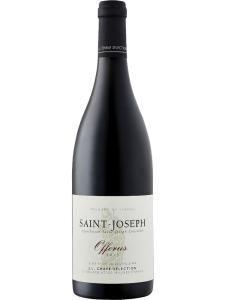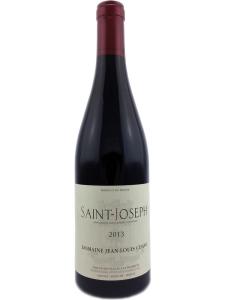Saint-Joseph, in France's northern Rhone Valley, is comfortably the region's largest appellation in terms of geographical coverage. When originally introduced, in 1956, it covered just six parishes, but following early commercial success and the subsequent drive for expansion, the boundaries were extended in 1969. It now covers more than 26 communes and stretches from Chavanay in the north (where it stretches into Condrieu territory) to Chateaubourg in the south – a distance of roughly 30 miles (50km).
(© Christophe Grilhé)
The Saint-Joseph appellation title covers both red wines (made mainly from Syrah), and white wines (made from Marsanne and Roussanne blended in varying proportions).
Perhaps unsurprisingly, the best area of Saint-Joseph is where its vineyards are closest to the excellent terroir of Hermitage, in the middle of the northern Rhone region. Although Hermitage and its granite hills are located on the east bank of the river, the town of Tournon on the west bank shares some of its geographical bounty. The communes of Vion, Lemps, St-Jean-de-Muzols, Tournon, Mauves and Glun (from north to south) cover an area three miles (5km) north and south of Tournon – land covered almost exclusively by vineyards and villages. The terrain here has less of the granite that warms the vines across the river, and the majority of its slopes face east rather than south-west towards the ripening rays of the afternoon sun, but it is still a source of many high-quality red wines. These are generally made in a lighter style, for earlier consumption (no more than four years), and lean towards fruitier flavors with softer tannins rather than the meatier, leathery style of Hermitage.
White wines makes up only one in ten bottles of Saint-Joseph's production and are dry in style, with honeyed, floral aromas and balanced weight and acidity. They are in marked contrast to the sweet Muscat de Beaumes-de-Venise wines from the southern Rhone and the heavier Viognier-based wines of Condrieu and Chateau-Grillet.
The terroirs of Saint-Joseph vary considerably in the 30 miles (50km) the appellation covers along the Rhone valley. The best sites are set on primary rock formations, consisting of gneiss, granite and mica-rich schist, while others are set on limestone outcrops, or the alluvial soils of ancient glacial terraces. These soils each bring their own characteristics to the wines produced from them.



